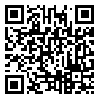دوره 2، شماره 4 - ( 9-1397 )
جلد 2 شماره 4 صفحات 59-54 |
برگشت به فهرست نسخه ها
Download citation:
BibTeX | RIS | EndNote | Medlars | ProCite | Reference Manager | RefWorks
Send citation to:



BibTeX | RIS | EndNote | Medlars | ProCite | Reference Manager | RefWorks
Send citation to:
Cheraghali F, Hajimoradloo N, Roshandel G, Meftah M, Azadfar S. Prevalence of Kawasaki Disease in Children Admitted to Taleghani Medical Center in Gorgan, Iran. jcbr 2018; 2 (4) :54-59
URL: http://jcbr.goums.ac.ir/article-1-167-fa.html
URL: http://jcbr.goums.ac.ir/article-1-167-fa.html
چراغعلی فاطمه، حاجی مرادلو نعیمه، روشندل غلامرضا، مفتاح مهرناز، آزادفر سمیه. Prevalence of Kawasaki Disease in Children Admitted to Taleghani Medical Center in Gorgan, Iran. Journal of Clinical and Basic Research. 1397; 2 (4) :54-59
چکیده: (6136 مشاهده)
Background and objectives: Kawasaki disease is an acute systemic vasculitis with an unknown etiology that mainly affects infants and children under five years of age. The aim of this study was to investigate the epidemiology of this disease in the Golestan Province, northeast of Iran.
Methods: In this descriptive-analytical study, we evaluated all patients admitted to the Taleghani Hospital in Gorgan (capital of the Golestan Province) from September 2005 to September 2012. Characteristics of patients who met the diagnostic criteria of Kawasaki disease were recorded.
Results: Overall, 58 children (36 males and 12 females) with Kawasaki disease were included in the study. Thirty-six patients (62.06%) were under 2 years of age and the rest were over 2 years of age. The annual incidence of Kawasaki disease in the studied population was 37.39 per 100,000 children. The most common clinical manifestations were rash (68.6%) and oral mucosal changes (60.8%). The most common laboratory findings were leukocytosis (37.3%), positive C-reactive protein (88.2%), erythrocyte sedimentation rate of >35 (74.5%) and anemia (68.6%). Among 37 cases who were subjected to sonography, one case was found with splenomegaly.
Conclusion: In this areas, Kawasaki disease is more common among children under the age of 2 years. The most common clinical manifestations of the disease are rash and oral mucosal changes.
Methods: In this descriptive-analytical study, we evaluated all patients admitted to the Taleghani Hospital in Gorgan (capital of the Golestan Province) from September 2005 to September 2012. Characteristics of patients who met the diagnostic criteria of Kawasaki disease were recorded.
Results: Overall, 58 children (36 males and 12 females) with Kawasaki disease were included in the study. Thirty-six patients (62.06%) were under 2 years of age and the rest were over 2 years of age. The annual incidence of Kawasaki disease in the studied population was 37.39 per 100,000 children. The most common clinical manifestations were rash (68.6%) and oral mucosal changes (60.8%). The most common laboratory findings were leukocytosis (37.3%), positive C-reactive protein (88.2%), erythrocyte sedimentation rate of >35 (74.5%) and anemia (68.6%). Among 37 cases who were subjected to sonography, one case was found with splenomegaly.
Conclusion: In this areas, Kawasaki disease is more common among children under the age of 2 years. The most common clinical manifestations of the disease are rash and oral mucosal changes.
نوع مقاله: پژوهشي |
| بازنشر اطلاعات | |
 |
این مقاله تحت شرایط Creative Commons Attribution-NonCommercial 4.0 International License قابل بازنشر است. |

This work is licensed under a Creative Commons Attribution-NonCommercial 4.0 International (CC BY-NC 4.0).






